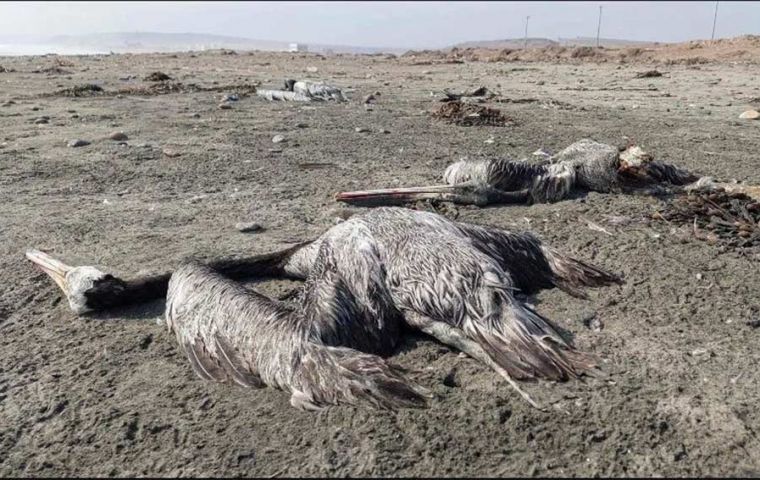MercoPress. South Atlantic News Agency
Peru declares avian influenza health alert
 “This virus has a 100% mortality rate”, warned Quevedo
“This virus has a 100% mortality rate”, warned Quevedo Peruvian health authorities have launched a health alert for 180 days after three cases of the highly contagious H5N1 avian influenza were detected in pelicans, it was announced Thursday in Lima.
With the seasonal migration of the birds, the disease could spread through South America and reach Central America, scientists said.
Avian influenza has no cure or treatment and causes high mortality in wild and domestic birds such as ducks, hens, chickens, and turkeys, among others.
”It is resolved to declare a sanitary alert for 180 calendar days, throughout the national territory, due to the presence of highly pathogenic avian influenza subtyped as Influenza A H5N1 in pelican (Pelecanus thagus),” the decree published in the Official Gazette read.
The National Agricultural Health Service (Senasa) also pointed out that the health alert was issued as a precaution because of the virus arriving from migratory birds from North America.
“We have three confirmed cases in the regions of Piura, Lambayeque, and Lima,” Senasa chief Miguel Quevedo said in a radio interview.
In his view, the disease is being transmitted from “wild birds that come from North America and pass through our country and reach as far as Patagonia.”
“We suspect that the species that is transmitting this virus is the [one known as] Franklin's gull,” Quevedo pointed out.
“Once avian influenza gets in, the epidemiological situation would become very complicated, this virus has a 100% mortality rate”, warned Quevedo.
Hundreds of dead pelicans appeared on the beaches and natural areas of Piura (border with Ecuador), Lambayeque, and Lima in recent weeks.
The United Nations Food and Agriculture Organization (FAO) has expressed its concern and issued a warning that with the seasonal migration of the birds the disease could reach Central and South America, Silva also explained.
According to Peru's National Forestry and Wildlife Service (Serfor), some 5,500 dead pelicans have appeared on the beaches and natural areas of Piura (bordering Ecuador), Lambayeque, and Lima in recent weeks.



Top Comments
Disclaimer & comment rulesCommenting for this story is now closed.
If you have a Facebook account, become a fan and comment on our Facebook Page!